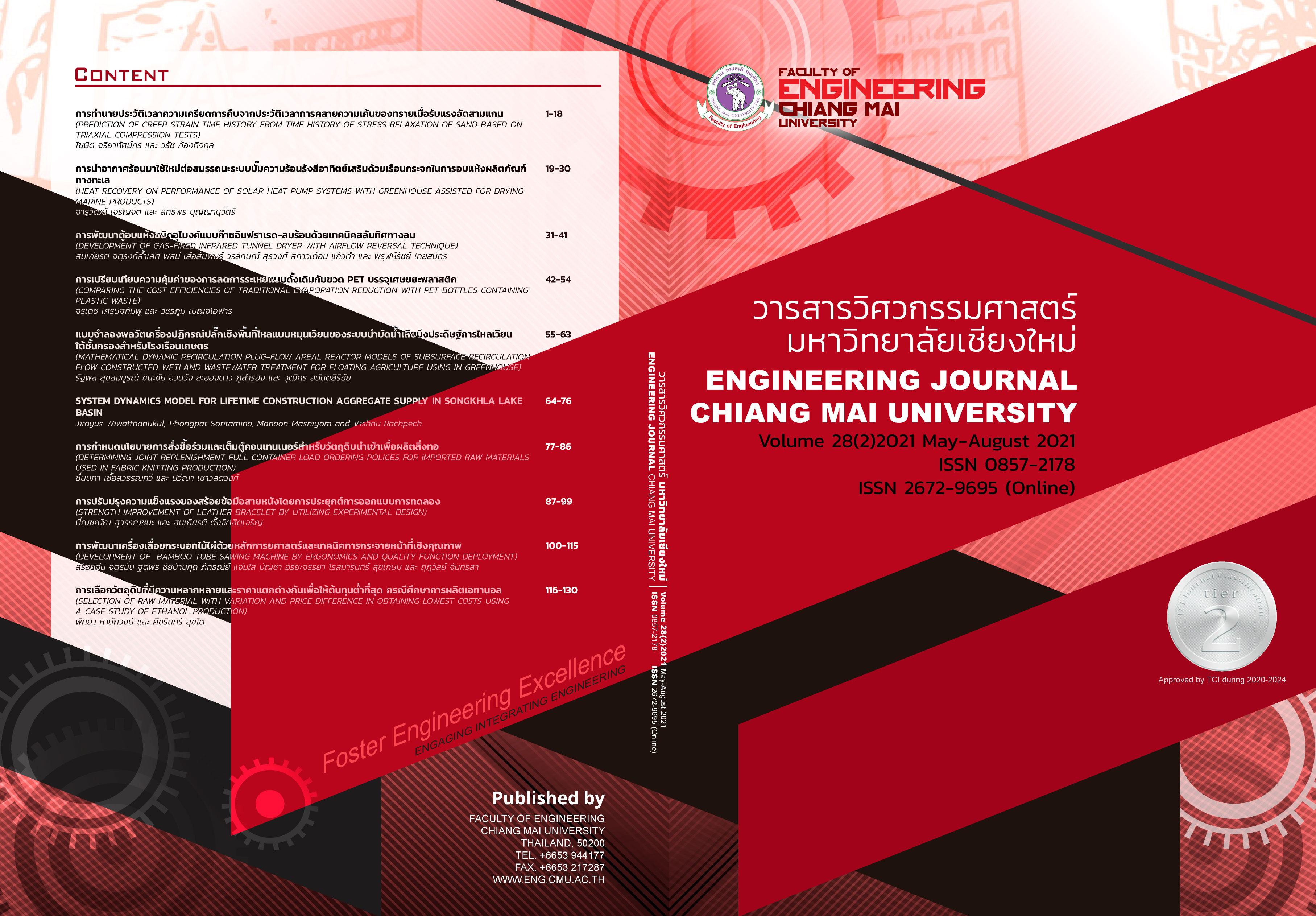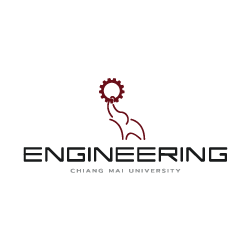Determining Joint Replenishment Full Container Load Ordering Polices for Imported Raw Materials used in Fabric Knitting Production
Keywords:
Ordering Policy, Imported Raw Materials, OUL policy, Full Container Load Concept, Joint-Ordering ConceptAbstract
This paper proposes an appropriate ordering policy for imported raw materials by adopting in joint-ordering and full container load (FCL) concept in order to reduce total cost including transportation cost and inventory holding cost while maintaining service level at 95%. This study was conducted as follows. Firstly, all relevant data (e.g., imported raw materials data and purchasing conditions) is reviewed. Secondly, the periodic review ordering policy type, i.e., OUL policy is proposed. The ordering quantity is determined by adjusting OUL policy in order to integrate joint replenishment and full container load concept. Three candidate policies are suggested: 1) Adjusting ordering quantity only based on average demand 2) Adjusting ordering quantity based on average demand and raw materials price, and 3) Adjusting ordering quantity based on average demand , raw materials price and variance of demand. Thirdly, the three candidate policies are evaluated by a simulation model. The most appropriate ordering policy must meet lowest average total cost and variation. Finally, a sensitivity analysis is done on the selected policy to show how changing in average demand and standard deviation of demand affects the total cost and service level.
The results show that the most appropriate ordering policy is to adjust the OUL policy based on average demand () only. When implementing the proposed policy with the actual demand of 2019, it also shows that the total cost, transportation cost, and inventory holding cost have been decreased by 34%, 44% and 24% respectively while achieving the desired service level. Finally, the sensitivity analysis result shows that the proposed policy is robust to changes in demand pattern. There is only 10%-11% changes in total cost compared to 50% changes in average demand and more variation or worst-case scenario for demand changes.
References
BSP Books Pvt.Ltd. (2019). Scientific inventory control Chapter 29: Published by Elseviser Inc.
E Rimawan, U Mardono, O Kustiadi, M A Lutfi, and I Saraswati. (2019). Design analysis of raw materials inventory on TC1118 cloth products with JIT approach. Paper presented at the IOP Conf. Series: Materials Science and Engineering 673.
M.J.G Van Eijs. (1994). Multi-item inventory systems with joint ordering and transportation decisions. Int.J. Production Economics 35, 285-292.
ปวีณา เชาวลิตวงศ์. (2561). การกำหนดนโยบายพัสดุคงคลัง ทฤษฏีและกระบวนการคิดอย่างเป็นระบบ (พิมพ์ครั้งที่1). กรุงเทพฯ: สำนักพิมพ์แห่งจุฬาลงกรณ์มหาวิทยาลัย.
สุพรพันธ์ จิตธรรม, และ ปวีณา เชาวลิตวงศ์. (2560). การจัดการสินค้าคงคลังสำหรับธุรกิจบริการอาหารแช่แข็งนำเข้าจากต่างประเทศ. วารสารการจัดการ มหาวิทยาลัยวลัยลักษณ์ ปีที่ 6 ฉบับที่ 1 (มกราคม – เมษายน 2560).
ศุภลักษณ์ จงสวัสดิวิบูลย์. (2555). การออกแบบระบบบริหารการจัดซื้อวัสดุนำเข้า. สาขาวิชาวิศวกรรมอุตสาหการ ภาควิชาวิศวกรรมอุตสาหการ คณะวิศวกรรมศาสตร์ จุฬาลงกรณ์มหาวิทยาลัย.
ณัฐพล สันแก้ว, และ กาญจ์นภา อมรัชกุล. (2562). การกำหนดนโยบายบริหารสินค้าคงคลังแบบเติมเต็มร่วมกันหลายรายการโดยมีข้อกำจัดการจัดส่งแบบเต็มคันรถ: กรณีศึกษา บริษัทจำหน่ายอุปกรณ์สำนักงานทาง E-Commerce แห่งหนึ่งในไทย. วารสารสถิติประยุกต์และเทคโนโลยีสารสนเทศ, ปีที่ 4 ฉบับที่ 2 (กรกฎาคม - ธันวาคม 2562).
Downloads
Published
Issue
Section
License
ลิขสิทธิ์ของบทความที่ตีพิมพ์ในวารสารฉบับนี้จะยังเป็นของผู้แต่งและยินยอมให้สิทธิ์เผยแพร่กับทางวารสาร
การเผยแพร่ในระบบวารสารแบบเปิดนี้ บทความจะสามารถนำไปใช้ได้ฟรีในการศึกษา และในทางที่ไม่เกี่ยวกับการค้า




